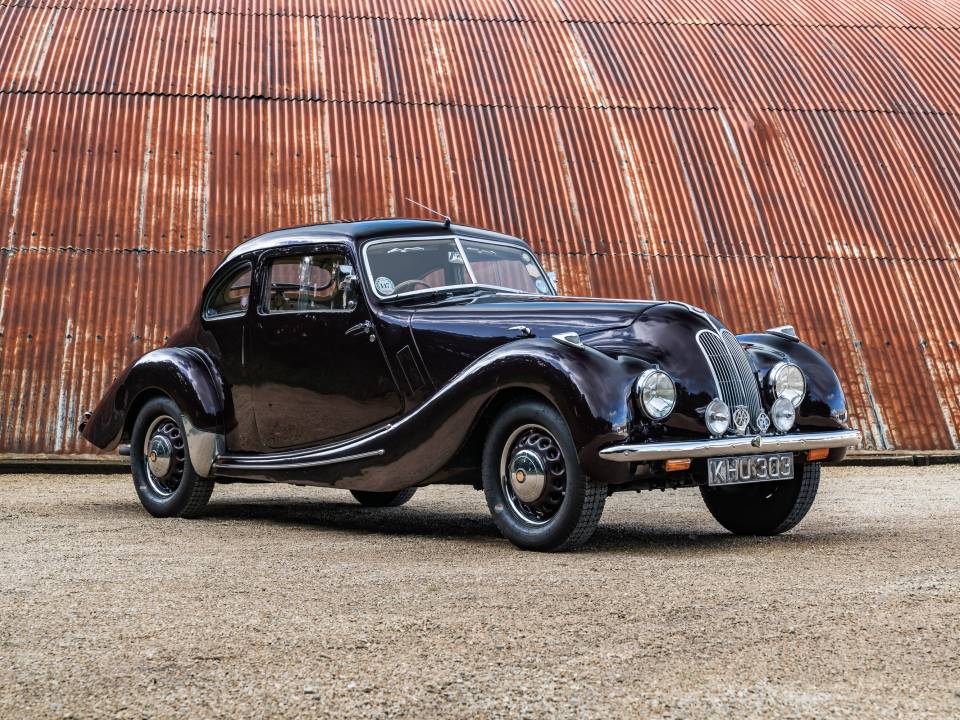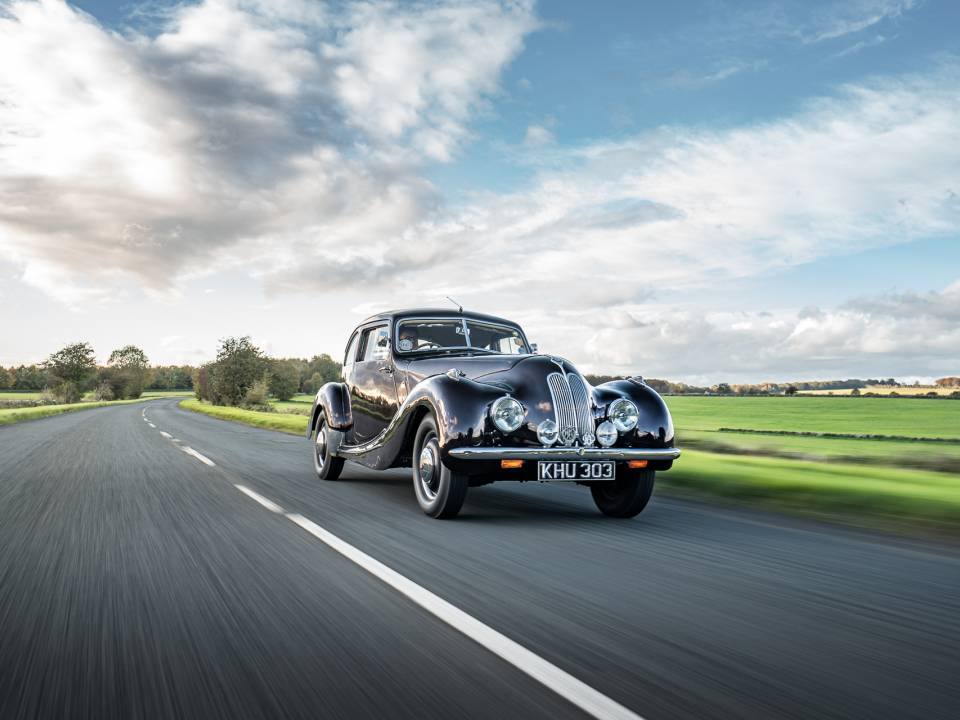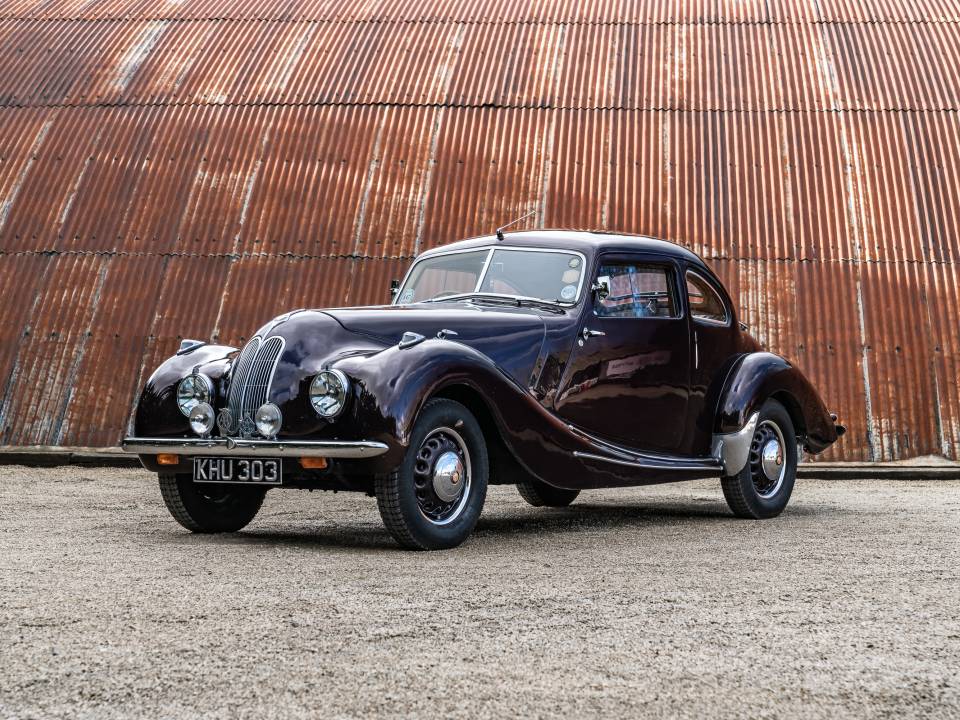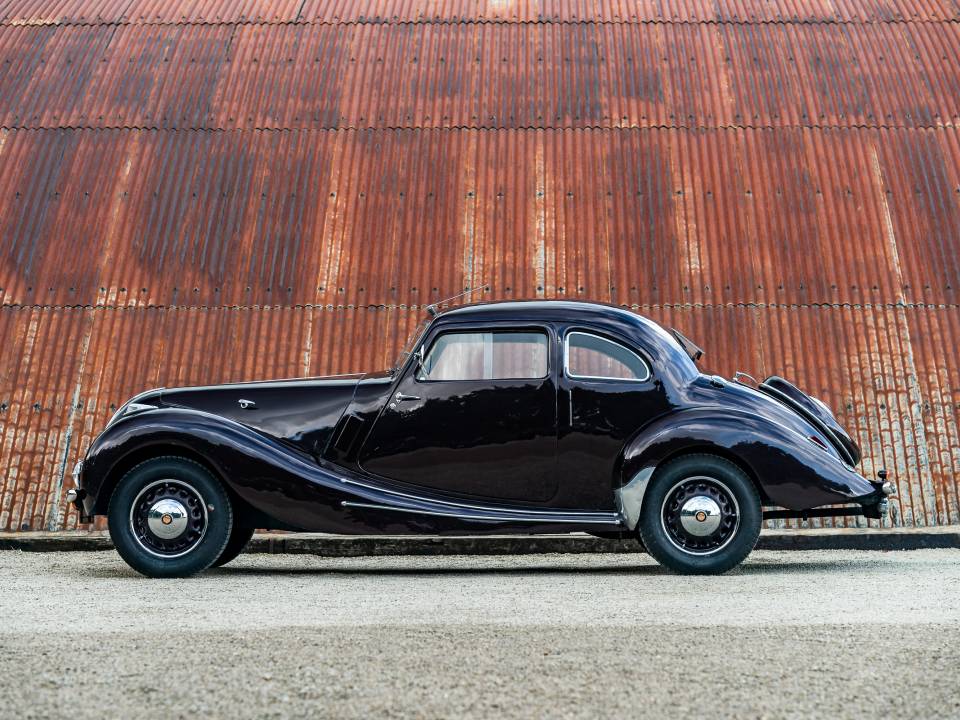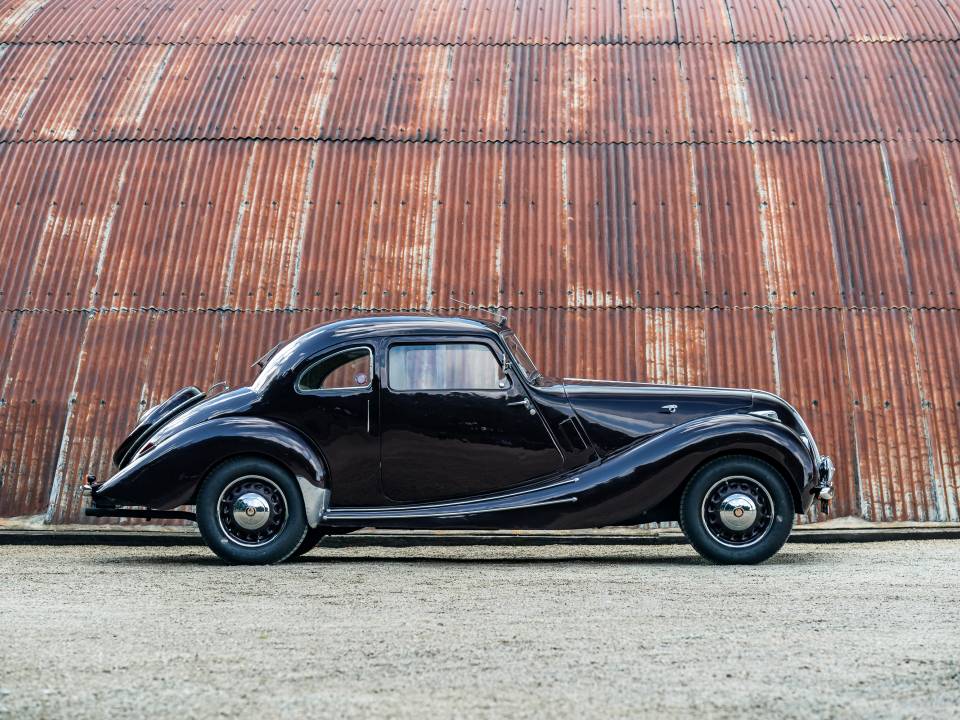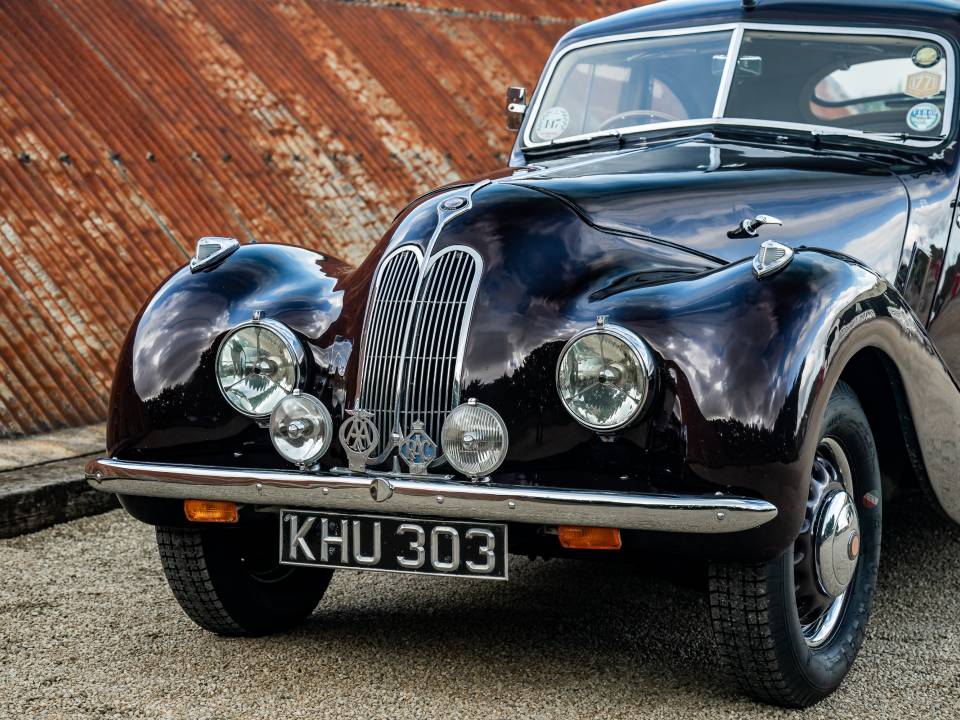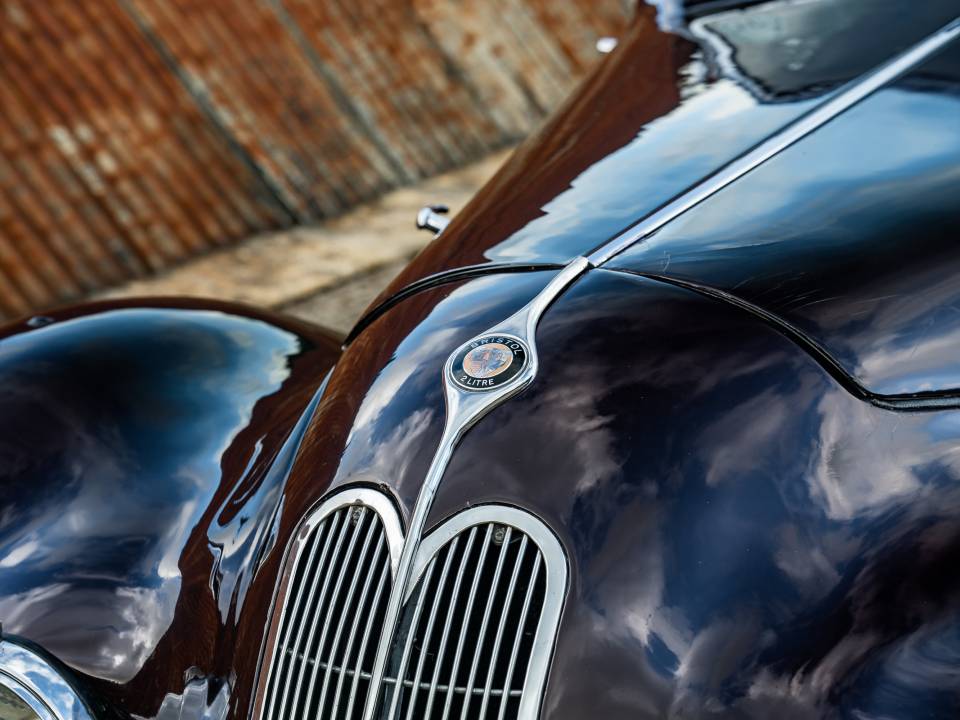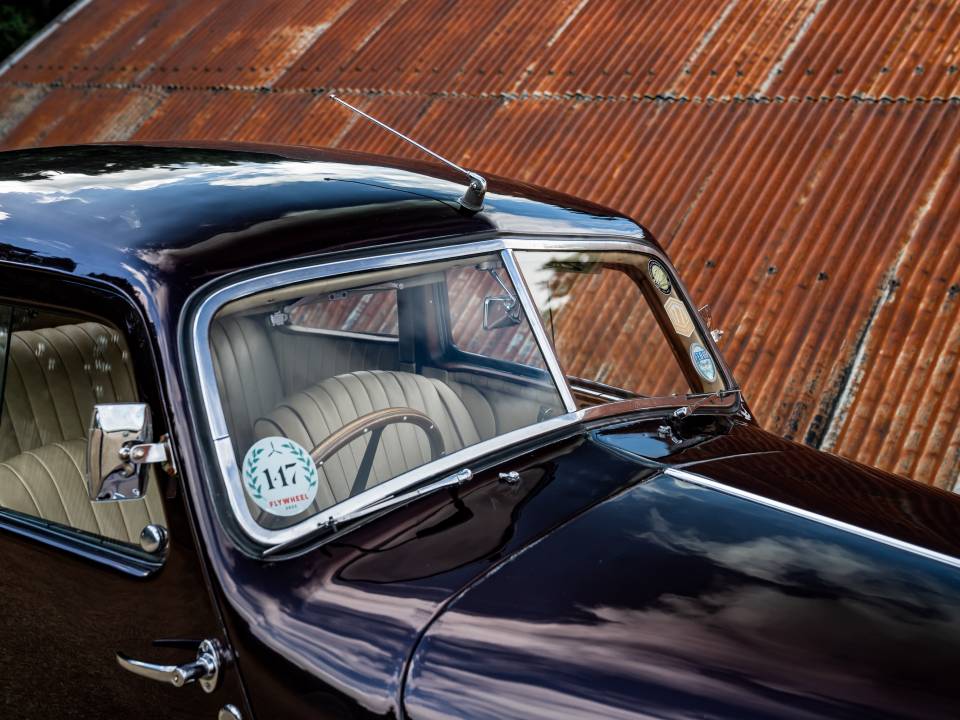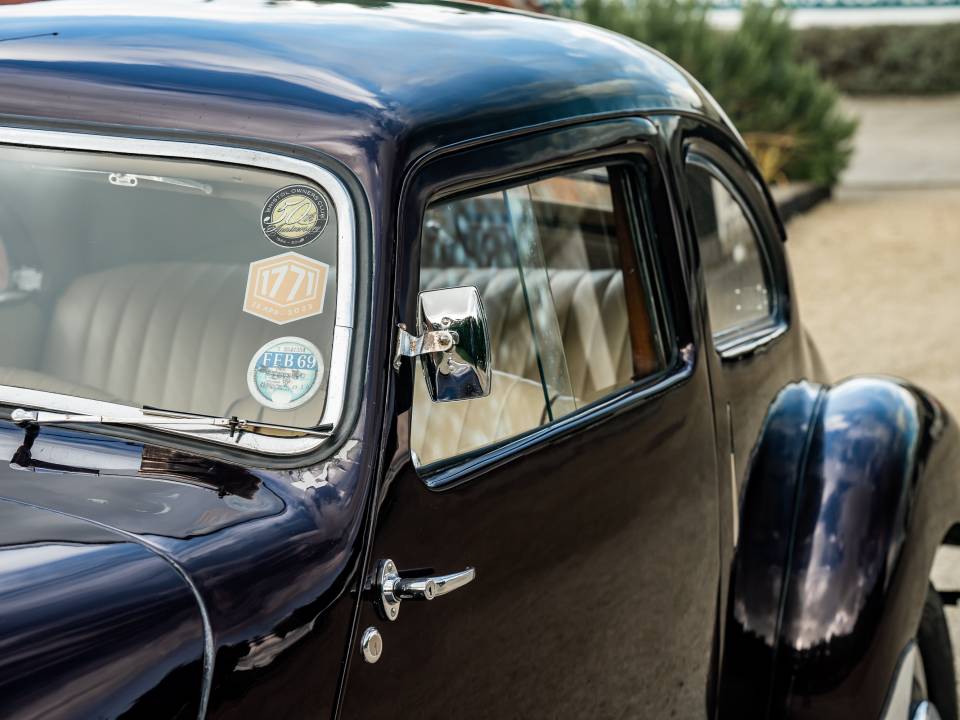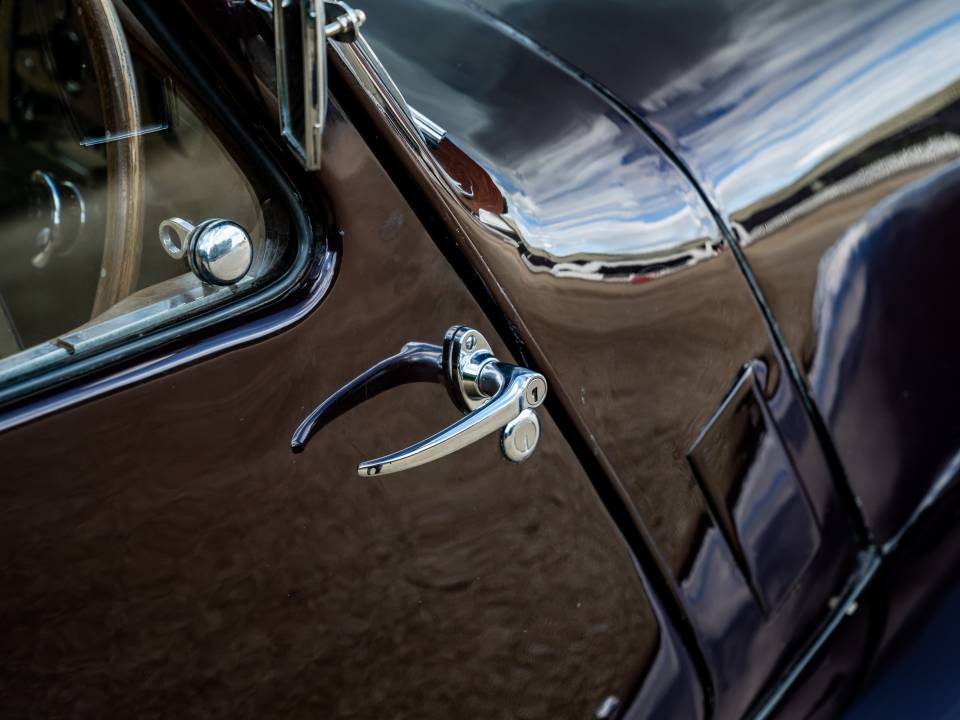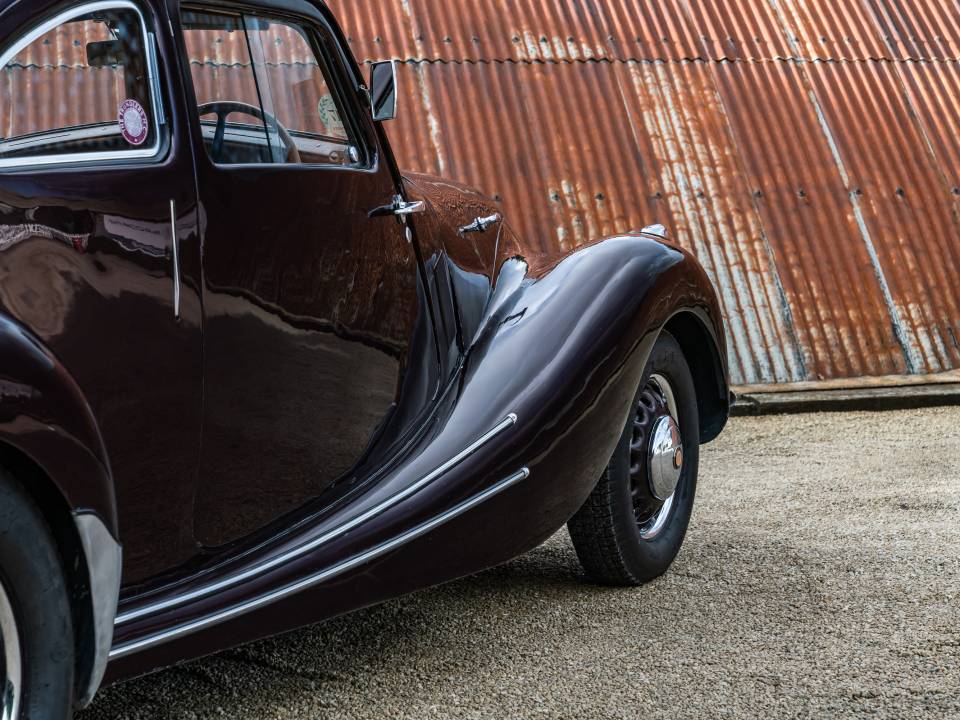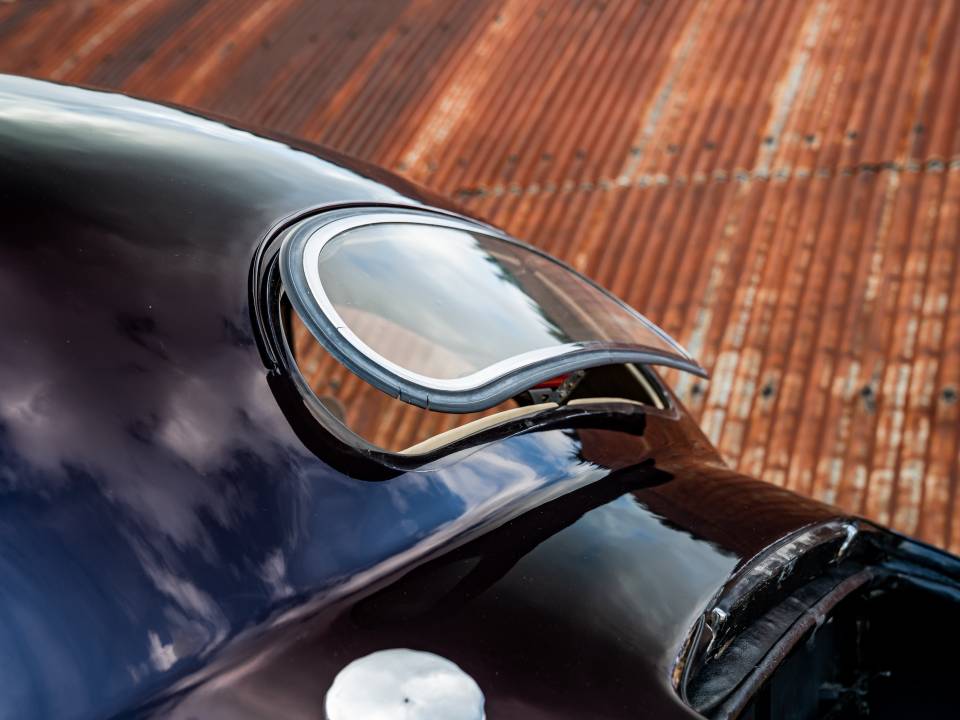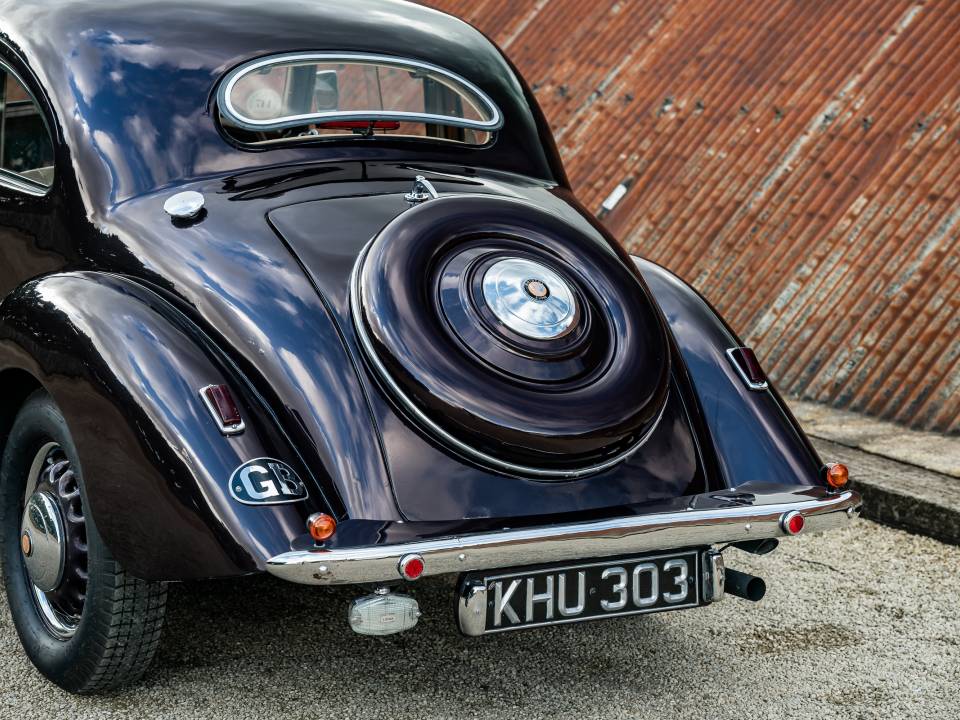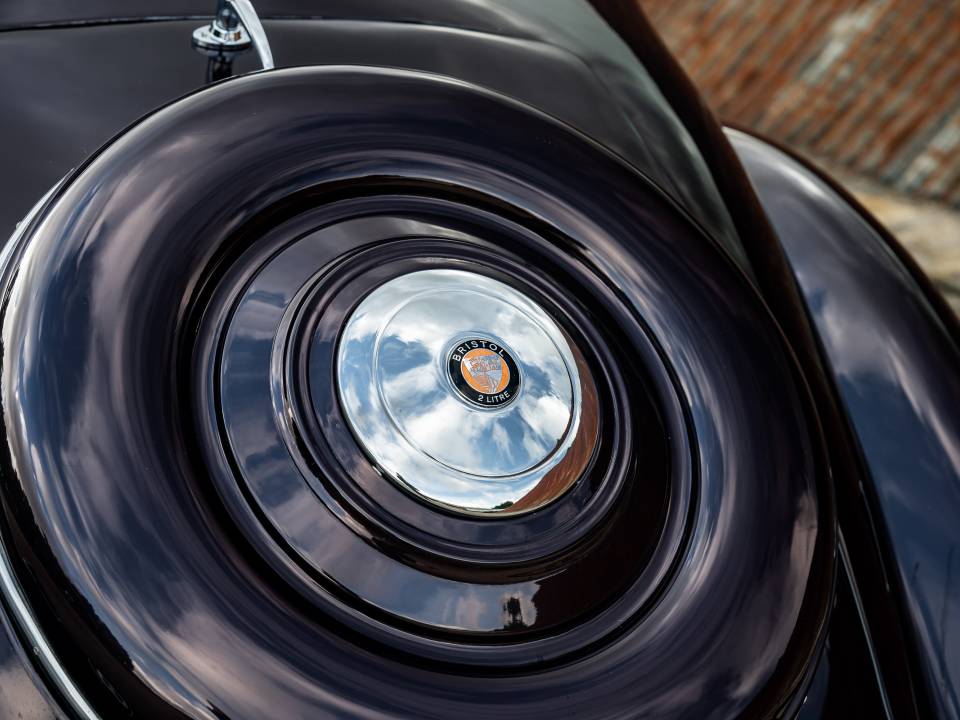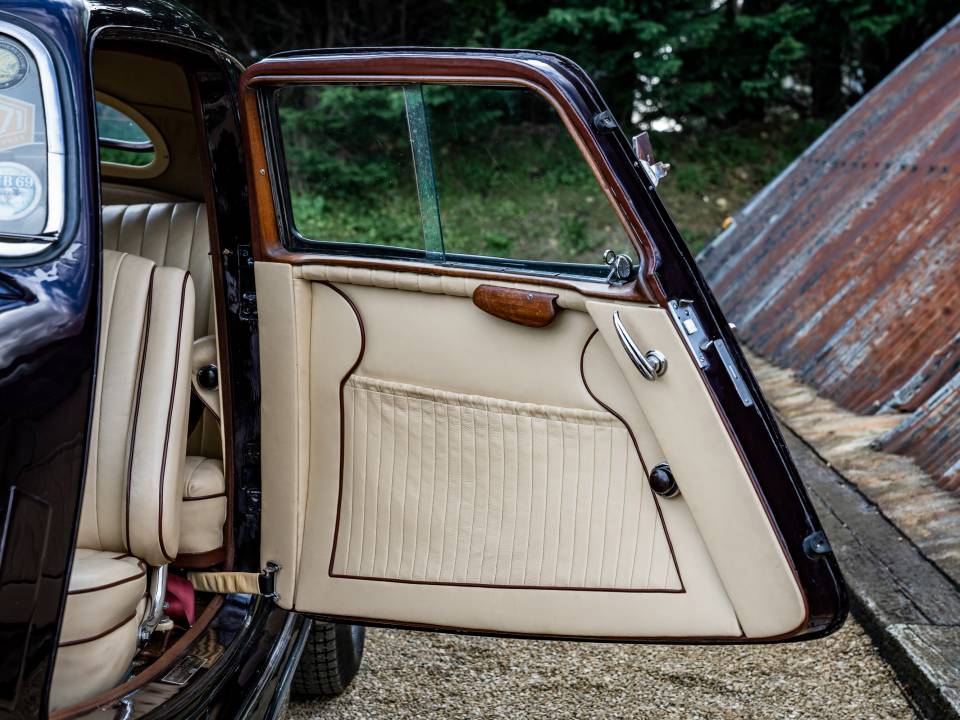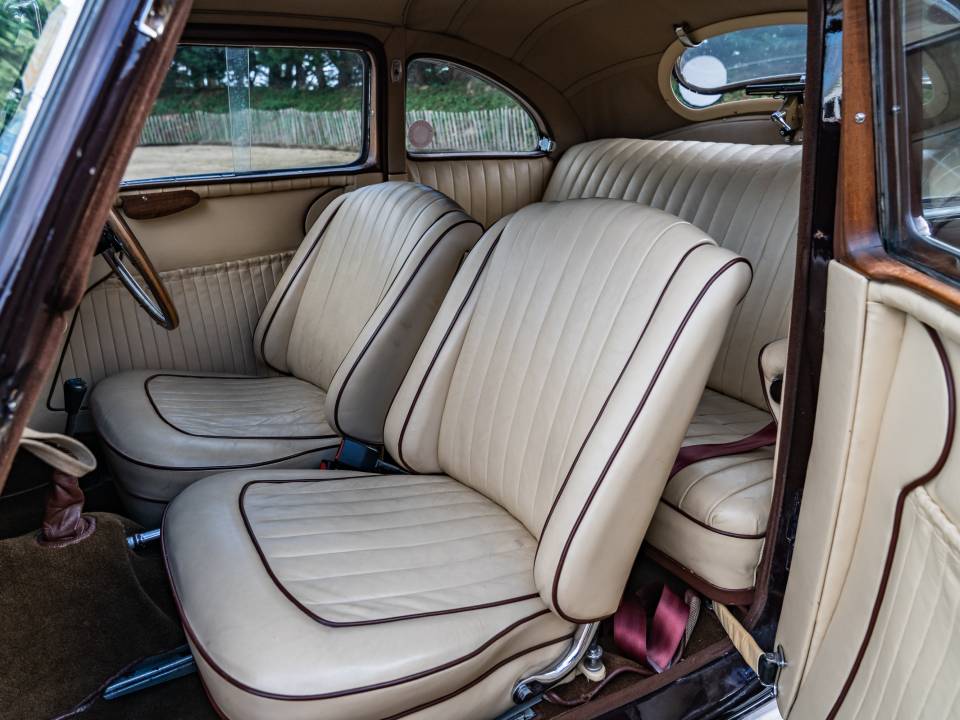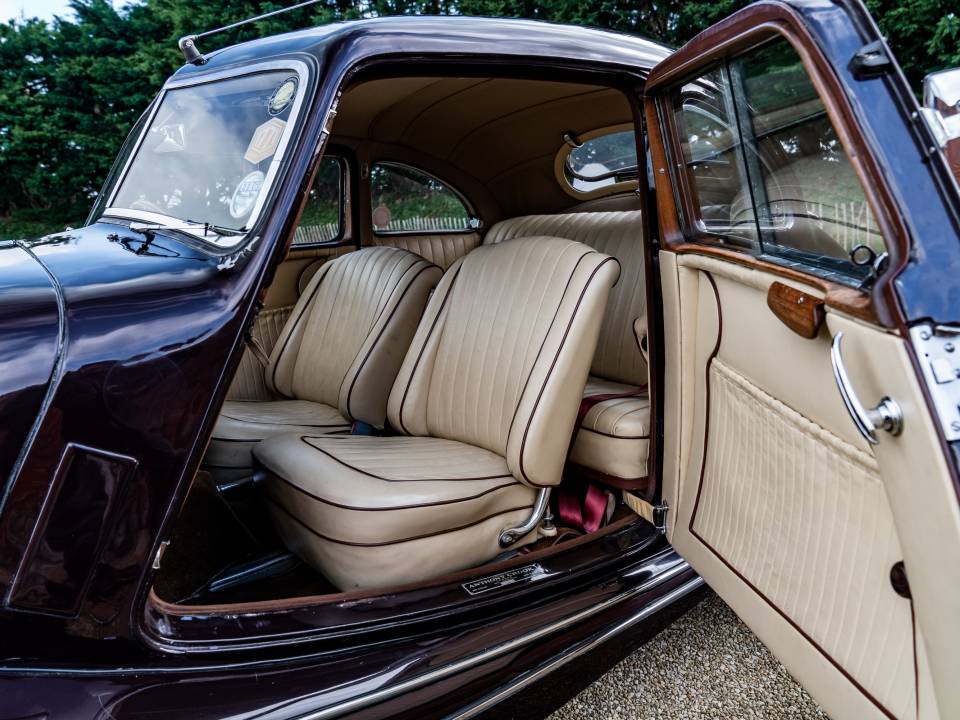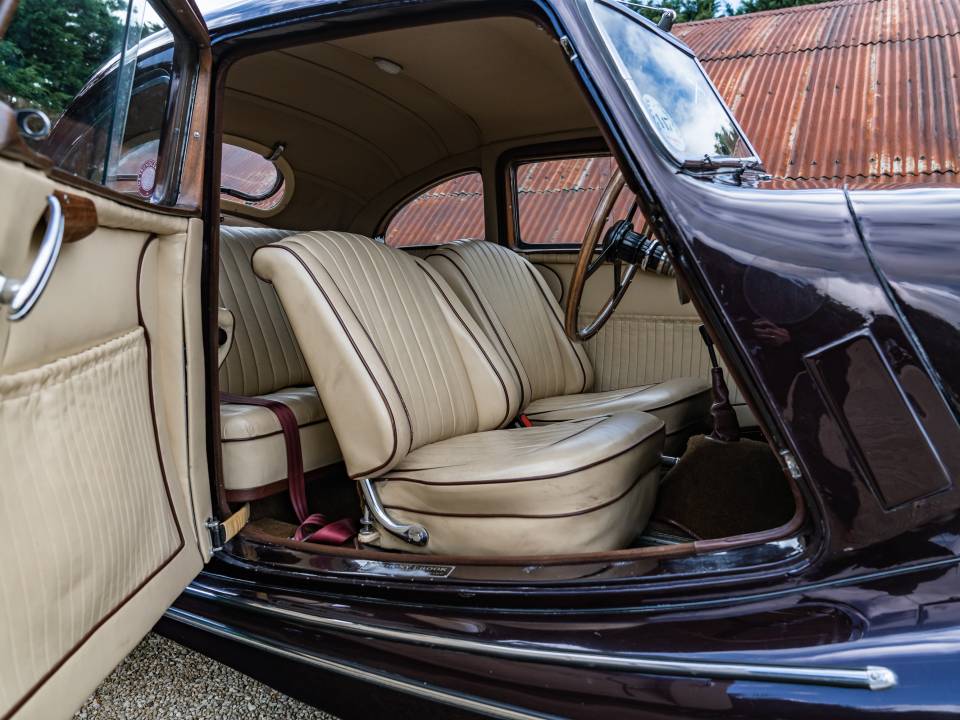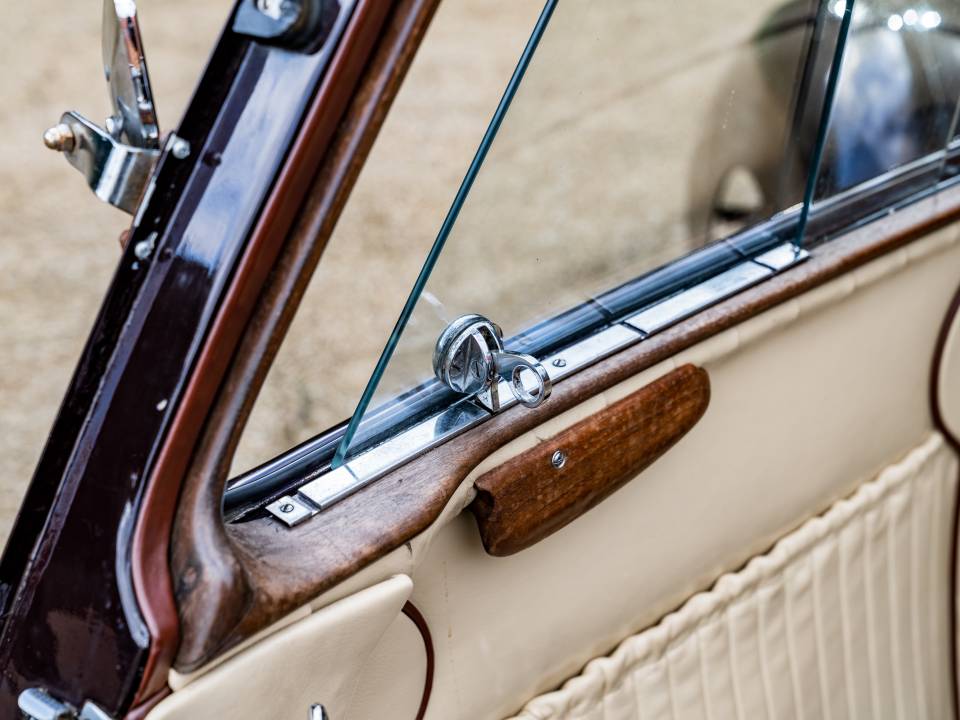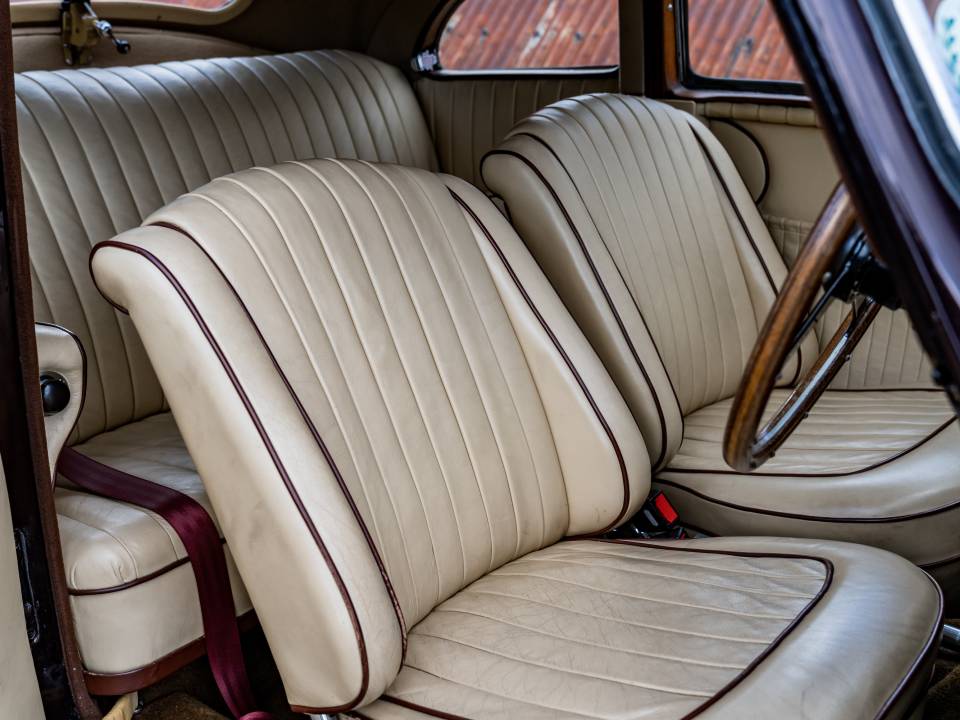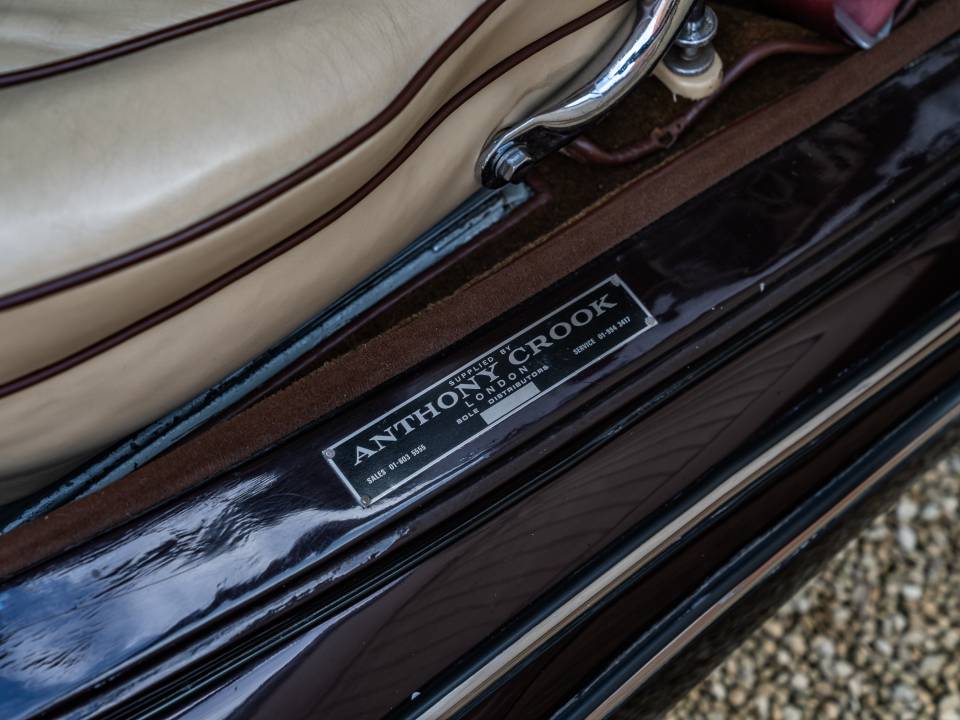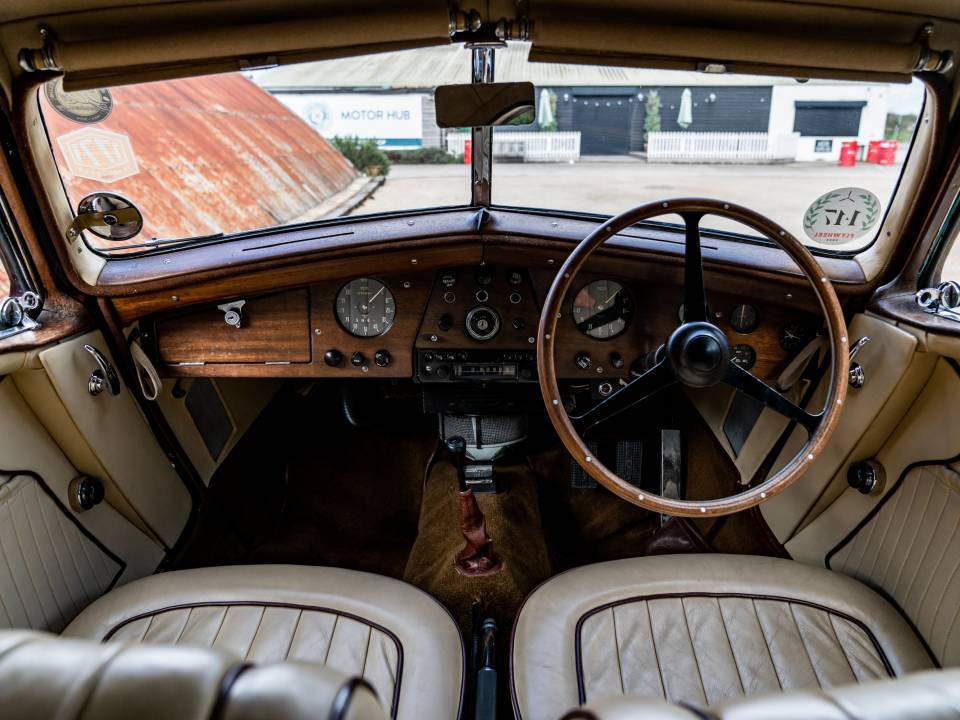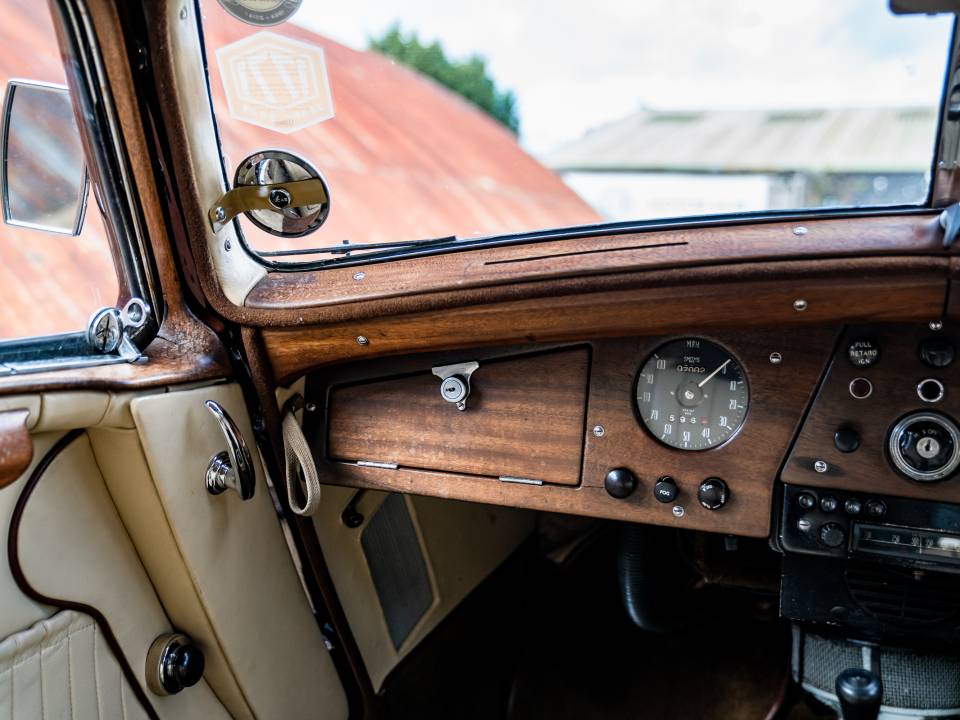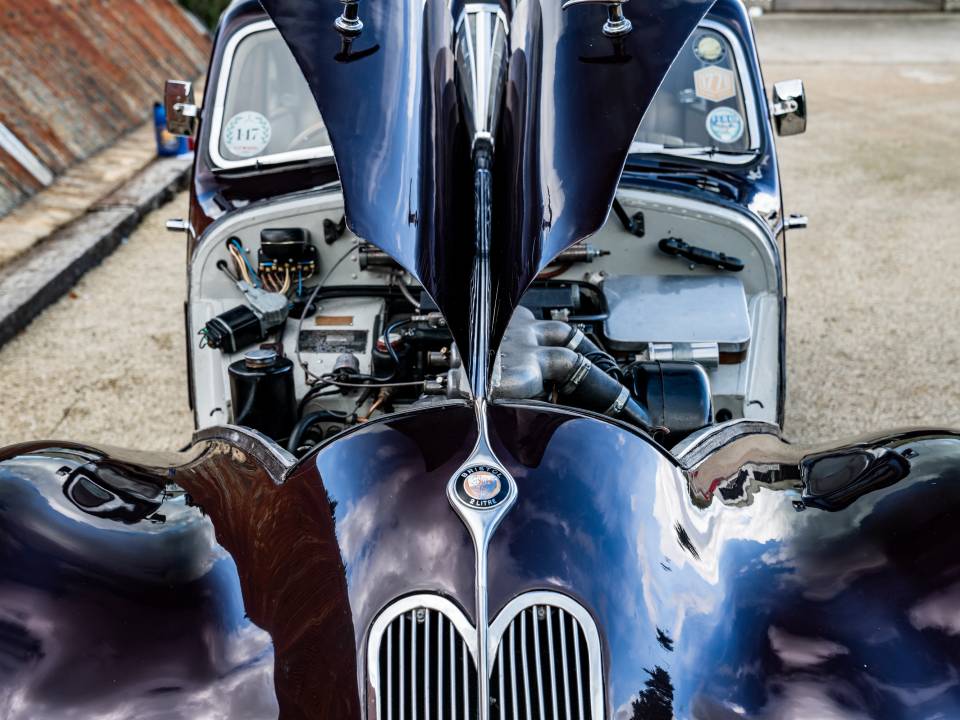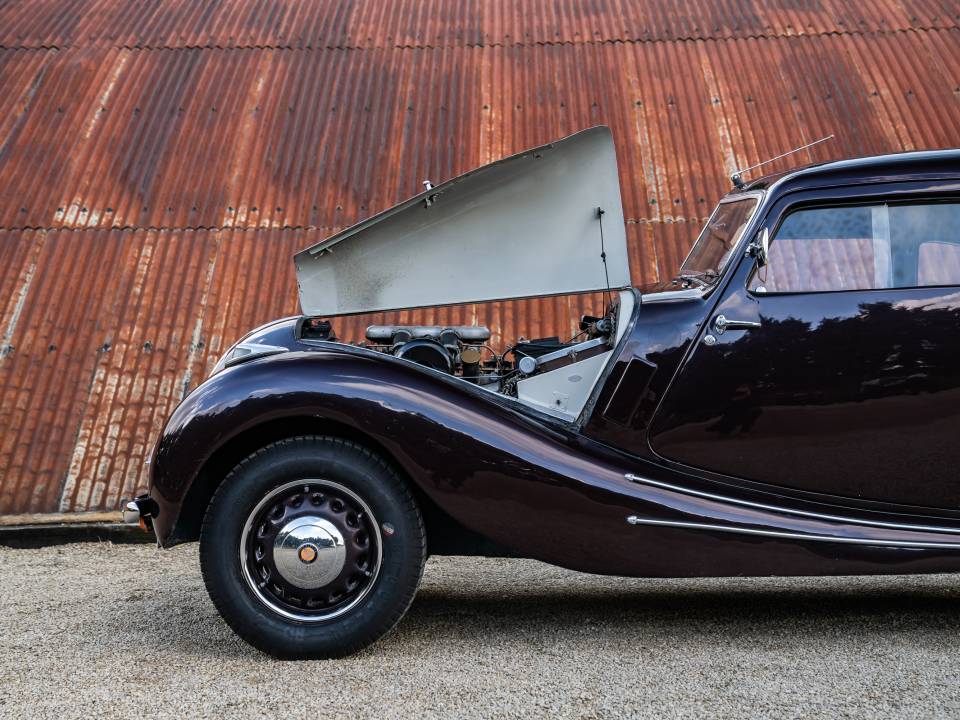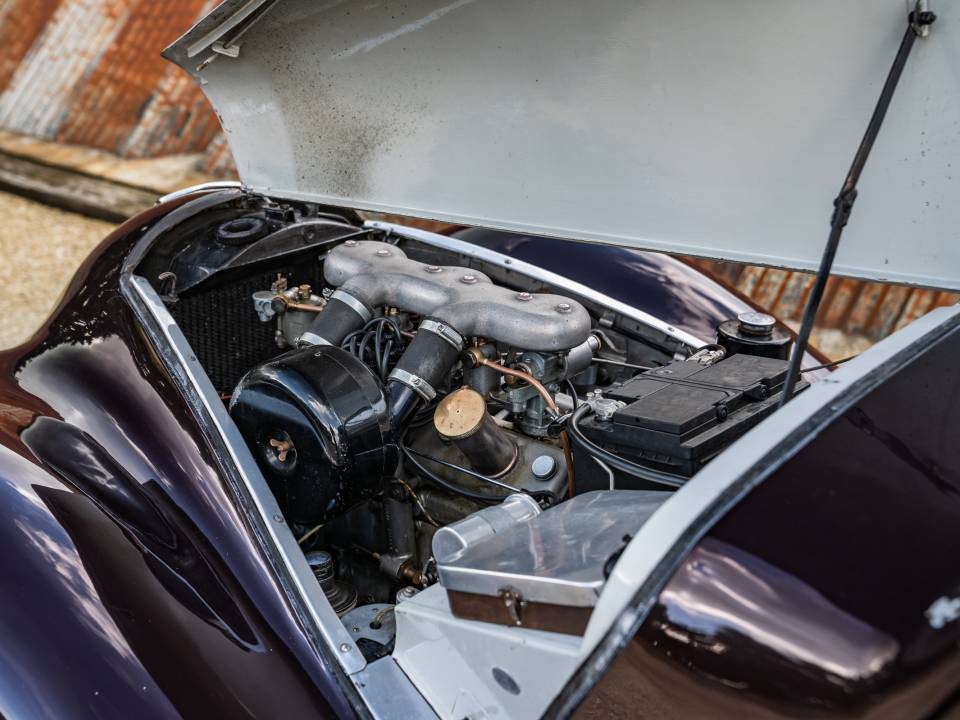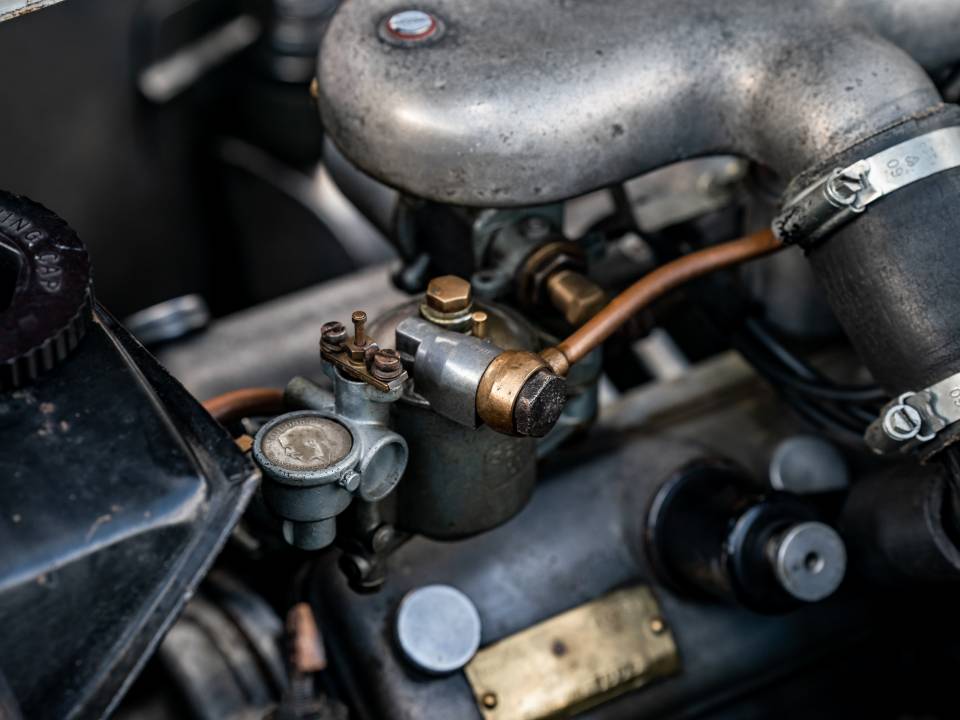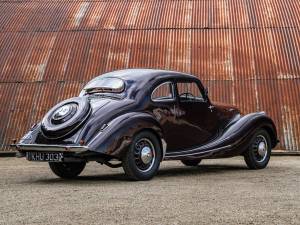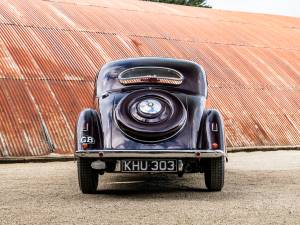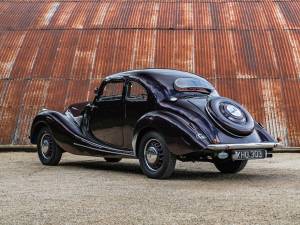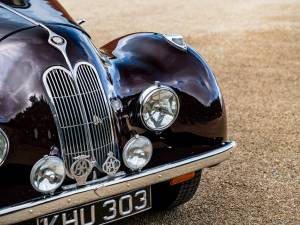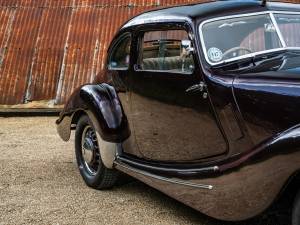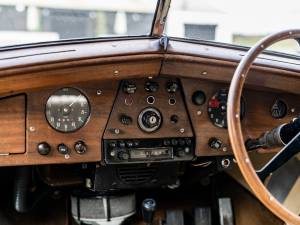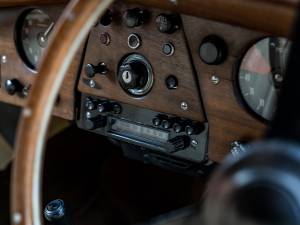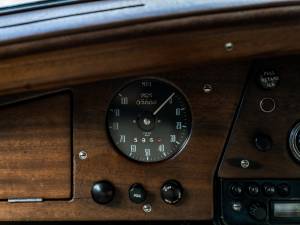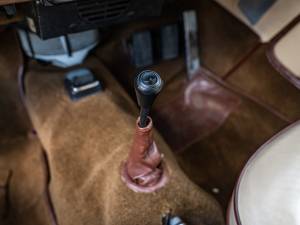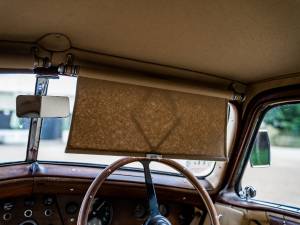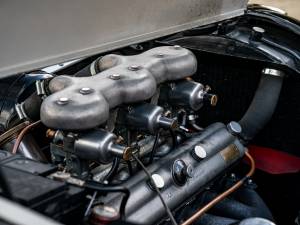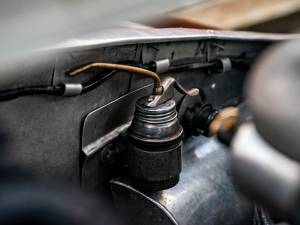1947 | Bristol 400
Factory development and road-test car
Factory development and road-test car
Factory development and road-test car
Beschrijving
- 1947 Bristol 400 for sale
- Used as a factory development and road-test car
- Featured in both The Autocar and The Motor during 1948
- Used extensively by BAC Chairman Reginald Verdon-Smith
- Fabulous history file with period photographs and press cuttings
This fascinating Bristol 400 has a rich history that includes being used as a development and road-test car, being driven by royalty, and being used by senior figures within the Bristol Car Company.
Chassis number 400/1/109 was the fourth production car to be built and was registered KHU 303 on 15 May 1947. It was retained by the factory and lent to The Autocar for two weeks so that it could put through a full road-test by the renowned British magazine. When the article was published on 9 January 1948, it said that the Bristol 400 was ‘a connoisseur’s car, attractive to look upon, comfortable to ride in and a constant delight to handle’.
Later that year, KHU 303 was taken on a 2000-mile test around continental Europe by The Motor, which noted that it had a ‘quite exceptional ability to suit itself to the mood of driver and passenger’.
It was also on duty when the Shah of Persia flew in to London, from where both he and the 400 were flown to Filton by Bristol Freighter so that he could take a tour of the Bristol Aeroplane Company’s headquarters. Having been met by a contingent that included Managing Director Sir Stanley White and his son George, the Shah got behind the wheel of KHU 303 and took it up to 80mph on the BAC runway.
Modifications made to this car by the factory during 1947 and 1948 included lowering the boot floor to increase capacity, repositioning the spare wheel on the outside of the boot with a cover of unique design, the addition of a wind-out rear window to improve ventilation, the adoption of straight blade bumpers to replace the original ‘cow horn’ style, and triple downdraft Solex carburettors.
Having completed its development work, KHU 303 was used extensively by Reginald Verdon-Smith, who would go on to become Chairman of the Bristol Aeroplane Company and the British Aircraft Corporation. He later took the decision to continue development of the Bristol Olympus jet engine, in defiance of government directives that favoured the Rolls-Royce Conway. Had he not done so, there would have been no immediately available powerplant for Concorde.
Verdon-Smith took the 400 on two trips to the continent during 1949 – once for a family holiday to Brittany, and on the other occasion all the way to Switzerland for the Geneva Motor Show. Both journeys are extensively recorded in the history file via photographs and hand-written notes.
When Verdon-Smith took on a new 401 as his company car, KHU 303 was used by his wife Jane, and decades later it would be owned by their son, William Verdon-Smith.
The 400 stayed with Bristol until the mid-1950s and was seconded to engineer Sid Gibbons, part of the team responsible for the Bristol 450 Le Mans Car. After that, it was finally sold into private ownership and the logbook shows that it was with David Swale in Surrey in 1958. In November that year it was sold to a new owner in Yate, near Bristol, before passing through two Gloucestershire-based custodians.
In 1967, it was bought by Robert Matthews and during the mid-1970s it was dismantled as part of a restoration that was never completed. In October 1998, the project was taken on by a new owner who spent the next 10 years returning this 400 to the road.
In 2015, KHU 303 was acquired by William Verdon-Smith, who took it to respected marque specialist Spencer Lane Jones. In early 2016, an overdrive unit was fitted, along with seat belts and a high-level rear brake light. Further discreet additions include modern flashing indicators and a brake servo, the six-cylinder engine is now once again running on triple SU carburettors – correct to the earliest 2-litre Bristol engine configuration – and the cylinder head was rebuilt.
More recent work has included an overhaul of the braking system, a new exhaust, new front kingpins and bushes, and reconditioning of the rear axle. All of this work contributes to making KHU 303 one of the best-driving 400s there is.
This well-known and historic Bristol 400 is now being offered for sale directly from the family of the first owner, being currently owned by his grandson. It has an extensive file that includes invoices and notes on the work that has recently been carried out, period photographs from its time as a press and development car, copies of the articles from The Autocar and The Motor, and photos that relate to the car’s European adventures.
It even boasts a complete original tool kit in the engine bay and represents a rare opportunity to buy a unique piece of early Bristol history.
MODEL HISTORY
The Car Division of the Bristol Aeroplane Company was formed in the immediate aftermath of World War Two as a way of retaining its skilled workforce. Its first model – the 400 – was based upon various elements of BMW’s pre-war range, the rights to which had been obtained as war reparations.
In effect, the 400 combined the chassis of the BMW 326 with the 1971cc straight-six engine from the 328. This superb cross-pushrod straight-six gave the Bristol 400 a top speed of 90mph and proved ideally suited to further tuning – it would be developed for use in a variety of motorsport applications during the 1950s.
The 400 used steel and aluminium body panels on an ash frame, and the majority of the car was built in-house – Bristol even made its own dampers and door locks. Steering was by rack and pinion, while hydraulically operated Lockheed brake drums were fitted all round. Independent front suspension was employed and the four-speed gearbox had synchromesh on all but first gear.
At a total of £2373 in 1948, the 400 was an expensive and exclusive car that was built in relatively small numbers – but its quality was clear from the start. When The Motor tested KHU 303 in 1948, it wrote that ‘the combination of good performance and handling qualities makes the Bristol almost without equal for safely high average speeds’.
At the time, the magazine had tested only two other cars – both of which had larger engines – that could better the 400’s top speed of 94mph.
The model was soon joined by the 401 saloon and the 402 cabriolet, which featured an updated version of the six-cylinder engine and revised styling by Carrozzeria Touring, but the original 400 survived until 1950 before being discontinued in favour of the ‘aerodyne’ 401 four-seater.
Voertuigdetails
Kenmerken
- Merk
- Bristol
- Model
- 400
- Eerste registratie
- Niet voorzien
- Bouwjaar
- 1947
- Kilometerstand
- 0 km
- Carrosserienummer
- Niet voorzien
- Motornummer
- Niet voorzien
- Transmissienummer
- Niet voorzien
- Gelijke nummers
- Nee
- Vorige eigenaren
- 6
Technische details
- Carrosserie detail
- Sedan (2-deurs)
- Vermogen (kW/pk)
- 63/86
- Cilinderinhoud (ccm)
- 1971
- Cilinders
- 6
- Deuren
- 2
- Stuur
- Rechts
- Versnellingsbak
- Manueel
- Versnellingen
- 4
- Transmissie
- Achterkant
- Remmen voor
- Trommel
- Remmen achter
- Trommel
- Brandstof
- Benzine
Individuele configuratie
- Kleur
- Anders
- Kleurbeschrijving van fabrikant
- Maroon
- Interieurkleur
- Beige
- Interieur materiaal
- Leder
Conditie en registratie
- Conditie categorie
- Gerestaureerd
- Heeft inspectierapport
- Niet voorzien
- Conditie
- Inspectierapport bestellen
- Toegelaten
- Rijklaar
- Ongevallen vrij
- Mille Miglia toegelaten
